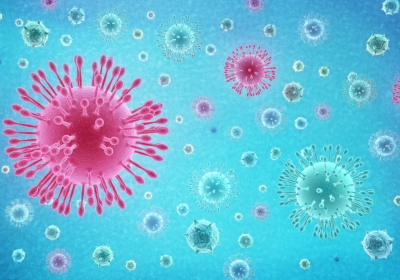By Rich Lesser
CEO
Boston Consulting Group
In Nigeria, many adults have compromised immune systems due to prevalence of ailments such as malaria, HIV, tuberculosis, making them susceptible to COVID-19. Children are also susceptible to the virus given high levels of malnutrition with about 32 percent of those under 5 years in this category.
Efficient systems should be put in place to ensure equitable distribution and also prevent wastage. Nigeria can leverage the knowledge and experience from dealing with Ebola and Polio to prevent more deaths from COVID-19.
With countries around the world struggling and India setting new, devasting records for COVID-19 deaths and cases almost daily, the U.S. government’s decision to share up to 60 million doses from its stockpile of AstraZeneca vaccines was an easy one. Now it’s time to make the more difficult choices and truly lead the global fight against this disease.
We Can Do More, and We Can Do So Now
Following a modeling done by Boston Consulting Group (BCG), it suggests that by the end of July, the U.S. will have an upward of 200 million surplus vaccine doses that could be used by COVAX—the global partnership of GAVI, CEPI, UNICEF, and WHO—to save more than 500,000 lives across the globe. Unless U.S. leaders and vaccine manufacturers start working on a redistribution plan in the coming weeks, those doses will instead end up sitting in cold storage.
There are already more than 50 million doses available to be administered across the U.S. After reserving enough for every American, there will be an excess of at least 100 million doses by July (of course, that figure will be even higher if more Americans are not convinced to get vaccinated).
Add to that an additional 100 million doses of Novavax expected to be authorized and delivered by end of July, and the United States Government will be sitting on a stockpile of at least 200 million doses.
Beneath the headline of 60 million AstraZeneca doses set to be shared was the detail that they may not be available for weeks, or even months. Meanwhile, vaccine uptake in the U.S. continues to soften, and the country is actively building inventory at a rate of nearly 2 million doses per day.
Instead of waiting until June to start redistributing, here is an opportunity to share a portion of secured capacity and unused doses today, quickly stymying further outbreaks across the world.
Making this happen quickly will require significant political will from the White House as well as leadership and collaboration from manufacturers.
Other efforts, such as relaxing export restrictions on raw vaccine materials, will help, but what the world needs is actual vaccine doses. And as manufacturers know all too well, calls for suspending intellectual-property protections on vaccines are oblivious to the complexities of vaccine production and regulatory approval processes.
An Urgent Redistribution Plan
In sharing vaccine doses, there’s an impulse for the United States Government to immediately bolster the supplies of her allies and neighbors, but COVAX can help them extend well beyond.
With global COVID-19 vaccine capacity expected to hit 14 billion doses this year for vaccines currently approved or under regulatory review, COVAX’s goal is relatively modest: to provide 2 billion vaccines and support in order to equitably vaccinate the 20% of the global population that is most vulnerable to the disease.
To date, COVAX has only had enough supply to deliver about 45 million doses globally. While the partnership has secured capacity for 1.5 billion doses this year, the bulk of that isn’t expected until September and December.
To make matters worse, the dire situation in India has led to export bans on vaccines from the Serum Institute of India, exacerbating COVAX’s supply shortfall. Cases and deaths are rising at rapid rates in many supply-starved low- and middle-income countries.
But despite $12 billion in available funding from the World Bank, there is simply no short-term vaccine capacity available for sale.
COVAX already has the legal and operational frameworks in place to redistribute manufactured doses, but the U.S. can reduce complexity by deciding to donate capacity now, allowing supply that rolls off the fill-and-finish lines in May, June, and July to go straight to COVAX-supported countries.
Waiting until July to donate physical doses means they may not reach vulnerable arms until September or later, potentially costing hundreds of thousands of lives that could have been saved in the meantime.
The rapid development of COVID-19 vaccines has been one of the greatest scientific achievements of the past 50 years. The challenge therefore is to ensure they also become one of greatest humanitarian and public health achievements. At least half a million lives depend on it.
Tolu Oyekan, Partner at BCG, states that while equitable distribution is a global concern, it should also be of great importance to the beneficiary countries. Government of these countries should ensure that the donated vaccines, even purchased vaccines should be equitably distributed to reach the poor, vulnerable and the rural dwellers.









